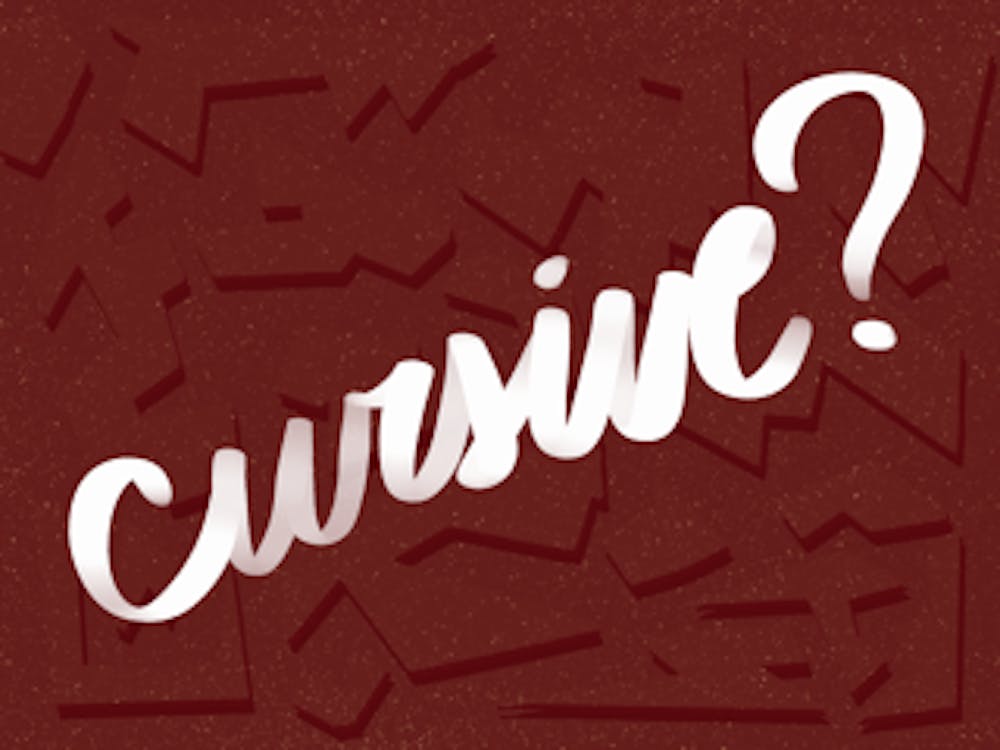Picture this: you’re in third grade. Ladies, you’re rocking your new clothes from Justice. Fellas, you just got a fresh pair of Nikes. You’re excited for the year to start when you’re handed a cursive writing book.
As of March 2018, Indiana law states that schools may teach cursive if they choose to do so. Even without this law, about 20 percent of schools were opting to teach cursive in 2017. Indiana Sen. Jean Leising, R-Oldenburg, has also filed a bill requiring cursive in schools for the eighth year in a row.
Although cursive may be considered a dying art, it is still a practice schools should be requiring, especially in elementary schools. Without cursive, a sense of professionalism is lost in the work environment, as well as relationships with older generations. Whether they be direct or indirect, these bonds become jeopardized due to an inability to read cursive.
When you’re in elementary school, your mind is like a sponge, able to learn and absorb as much of the essentials as possible. Cursive is one of those skills that doesn’t seem important at first. You wouldn’t think about putting "the ability to write in cursive" on a resume, but it does teach you a lot more than you would expect.
Not only does it teach you how to write the English language differently, it helps develop motor skills in different parts of the brain, as well as help those who suffer from situations as extreme as brain damage or as common as dyslexia.
Cursive is also essential to writing something that seems so trivial to us now: your signature. A signature in English is something that can only be taught with cursive. When you go to sign a check or a contract, you’re not going to write your name in print. Certain establishments will even require you to resign your name if it’s in print. Writing your name in print is like signing your name with a doodle — it doesn’t fly in the business world.
As for connecting with older generations, this is where reading cursive becomes more important than writing it — though you learn to read it by writing it.
Imagine you get a letter from your grandma and she’s written it in this beautiful cursive, almost like calligraphy, and you immediately give it to your parents to translate. While this seems like a not solid-enough reason for schools to require cursive, how do you think poor grandma would feel if you couldn’t read her letter?
In addition to those direct connections, some indirect connections may include having to read historical documents. Although most kids aren’t required to read original documents like the U.S. Constitution or the Bill of Rights, being able to when they visit the National Archives on their eighth grade field trips to Washington D.C. makes them feel more connected to their country and its history.
And even with the digitization of historical documents, that may simply include scans with the original cursive still present. While there are usually typed versions in addition to these presumed scans, where’s the fun in not being able to read a document in all its original glory?
In the end, cursive should be required not only in Indiana schools, but in all states. Without it, there’s so much the next generations of kids won’t be able to appreciate or accomplish. So why fight tradition when it’s worked out for those who have learned cursive?




